Welcome to our free classical music site

Do you write about classical music? Are you a blogger? Want to team up with Classical Connect? Send us a message, let's talk!

Do you write about classical music? Are you a blogger? Want to team up with Classical Connect? Send us a message, let's talk!
July 20, 2018. Pre-Mahlerite: the tragic story of Hans Rott. Hans Rott’s name is practically unknown these days. Usually when a composer, especially one born in modern times, is rarely performed, there’s a reason for it: it’s probably because his (and it’s almost invariably “his,” not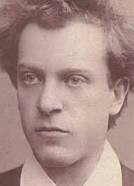 “her”) music is not very interesting (the numerous minor Italian late-Baroque composers come to mind). We think Rott is an exception, even if we don’t expect his music to join the classical cannon any time soon. Rott’s life was both short and tragic. He was born on August 1st of 1858 in a suburb of Vienna. His father’s original name was Roth, which means that Hans was most likely Jewish, although we don’t know whether he, like Mahler some time later, had later converted to Catholicism. Rott attended the Vienna Conservatory, where his organ teacher was Anton Bruckner. His composition teacher was Franz Krenn, who also taught Mahler. Mahler, two years younger, and Rott even shared a room for a while. But it was Bruckner, and also Wagner, who influenced Rott the most. In 1878 (he was 20) Rott decided to participate in a composers’ competition, submitting the first movement of his Symphony in E Major. Everybody on the jury, except for Bruckner, was highly negative. Two years later, Rott presented the complete symphony to Brahms. He should’ve known better! Brahms intensely disliked both composers whose influence he could discern in Rott’s music: Wagner and Bruckner. Brahms’s criticism was vicious: he told Rott that he had no talent and should look for a different vocation while he was still young. We can assume that at that time Rott was already mentally ill, because just several months later while traveling to Mülhausen by train (he had reluctantly applied for and received a position of the director of the Alsatian choir association) he pointed a revolver at a fellow passenger who was trying to light a cigar. The previous encounter with Brahms was probably on his mind, as in his madness he claimed that Brahms had planted dynamite on the train and he, Rott, was just trying to save his fellow travelers from being blown up. Rott was brought back to Vienna and institutionalized. He spent the rest of his short life in a lunatic asylum. Rott died of tuberculosis on June 25th of 1884, at age 25. Here’s what Mahler said in a conversation with a friend, the violist Natalie Bauer-Lechner: “What music has lost in him is immeasurable. His first symphony, written when he was a young man of twenty, already soars to such heights of genius that it makes him – with exaggeration – the Founder of the New Symphony as I understand it. It is true that he has not yet fully realized his aims here. It is like someone taking a run for the longest possible throw and not quite hitting the mark. But I know what he is driving at. His innermost nature is so akin to mine that he and I are like two fruits from the same tree, produced by the same soil, nourished by the same air. We would have had an infinite amount in common. Perhaps we two might have gone some way together towards exhausting the possibilities of this new age that was then dawning in music.” This acknowledgement from Mahler, who started composing his own First Symphony five years after Rott completed his, is very important. Rott’s music is very Mahlerian in its sound, style, even in somewhat chaotic development. Rott stopped composing at the age of 22, consumed by insanity. In addition to his symphony, he wrote several songs, smaller orchestral pieces, a string quartet and a string quintet. We can only guess how his talents would’ve developed, but as one listens to his Symphony in E, it becomes clear that his potential was immense. Here ’s the first movement, Alla Breve; here – the second, Adagio - Sehr Langsam; here – the third, Frisch und lebhaft; and, finally, here – the fourth, Sehr langsam – Belebt. It’s performed by the Mainz State Theater Philharmonic Orchestra, Catherine Rückwardt conducting.Permalink
“her”) music is not very interesting (the numerous minor Italian late-Baroque composers come to mind). We think Rott is an exception, even if we don’t expect his music to join the classical cannon any time soon. Rott’s life was both short and tragic. He was born on August 1st of 1858 in a suburb of Vienna. His father’s original name was Roth, which means that Hans was most likely Jewish, although we don’t know whether he, like Mahler some time later, had later converted to Catholicism. Rott attended the Vienna Conservatory, where his organ teacher was Anton Bruckner. His composition teacher was Franz Krenn, who also taught Mahler. Mahler, two years younger, and Rott even shared a room for a while. But it was Bruckner, and also Wagner, who influenced Rott the most. In 1878 (he was 20) Rott decided to participate in a composers’ competition, submitting the first movement of his Symphony in E Major. Everybody on the jury, except for Bruckner, was highly negative. Two years later, Rott presented the complete symphony to Brahms. He should’ve known better! Brahms intensely disliked both composers whose influence he could discern in Rott’s music: Wagner and Bruckner. Brahms’s criticism was vicious: he told Rott that he had no talent and should look for a different vocation while he was still young. We can assume that at that time Rott was already mentally ill, because just several months later while traveling to Mülhausen by train (he had reluctantly applied for and received a position of the director of the Alsatian choir association) he pointed a revolver at a fellow passenger who was trying to light a cigar. The previous encounter with Brahms was probably on his mind, as in his madness he claimed that Brahms had planted dynamite on the train and he, Rott, was just trying to save his fellow travelers from being blown up. Rott was brought back to Vienna and institutionalized. He spent the rest of his short life in a lunatic asylum. Rott died of tuberculosis on June 25th of 1884, at age 25. Here’s what Mahler said in a conversation with a friend, the violist Natalie Bauer-Lechner: “What music has lost in him is immeasurable. His first symphony, written when he was a young man of twenty, already soars to such heights of genius that it makes him – with exaggeration – the Founder of the New Symphony as I understand it. It is true that he has not yet fully realized his aims here. It is like someone taking a run for the longest possible throw and not quite hitting the mark. But I know what he is driving at. His innermost nature is so akin to mine that he and I are like two fruits from the same tree, produced by the same soil, nourished by the same air. We would have had an infinite amount in common. Perhaps we two might have gone some way together towards exhausting the possibilities of this new age that was then dawning in music.” This acknowledgement from Mahler, who started composing his own First Symphony five years after Rott completed his, is very important. Rott’s music is very Mahlerian in its sound, style, even in somewhat chaotic development. Rott stopped composing at the age of 22, consumed by insanity. In addition to his symphony, he wrote several songs, smaller orchestral pieces, a string quartet and a string quintet. We can only guess how his talents would’ve developed, but as one listens to his Symphony in E, it becomes clear that his potential was immense. Here ’s the first movement, Alla Breve; here – the second, Adagio - Sehr Langsam; here – the third, Frisch und lebhaft; and, finally, here – the fourth, Sehr langsam – Belebt. It’s performed by the Mainz State Theater Philharmonic Orchestra, Catherine Rückwardt conducting.Permalink
July 23, 2018. Cilea, Granados, Dohnanyi, Fleisher. This week is full of anniversaries: composers, conductors, pianists and a singer. We’d like to mention (for the first time) Francesco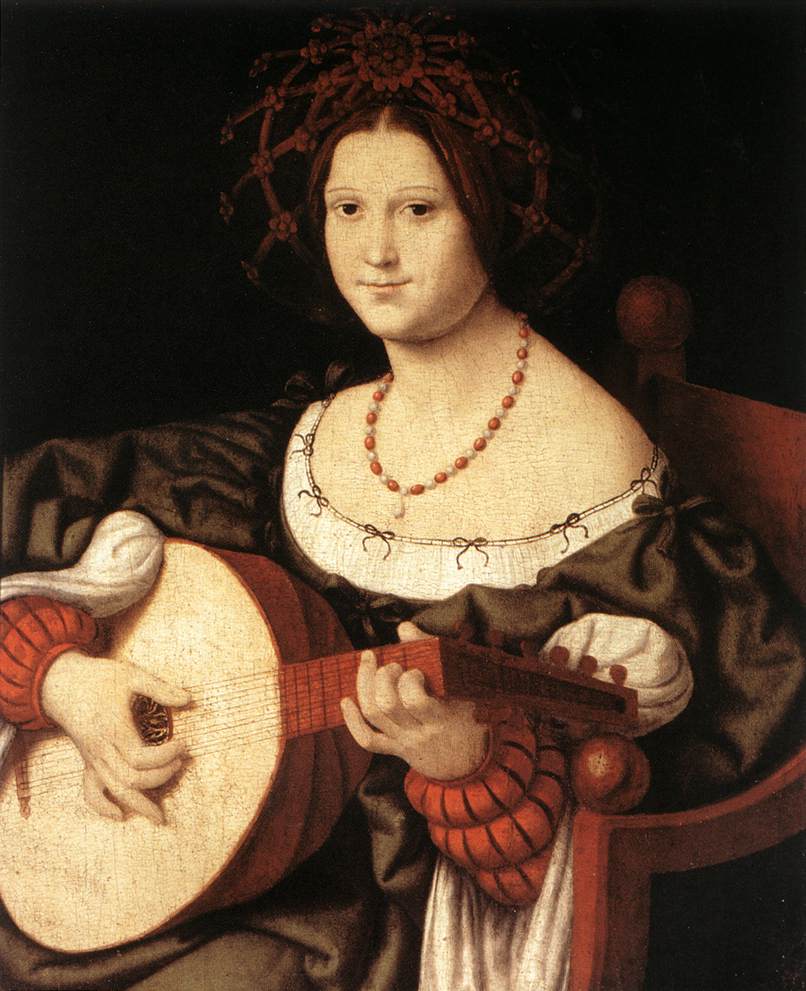 Cilea, the Italian opera composer who was born on this day in 1866. He’s remembered for his opera Adriana Lecouvreur, written in 1902. Even back then it probably sounded rather dated, and clearly sounds so these days, but the young Enrico Caruso sung at the premier to great acclaim, and some of the arias are very beautiful. All great sopranos of the last half century have sung Adriana: Montserrat Caballé, Joan Sutherland, Maria Callas. Here’s the incomparable Renata Tebaldi in the aria Io son l'umile ancella with the Orchestra of the Accademia de Santa Cecilia under the direction of Alberto Erede (Mario del Monaco and Giulietta Simionato are also in this fabulous 1962 recording).
Cilea, the Italian opera composer who was born on this day in 1866. He’s remembered for his opera Adriana Lecouvreur, written in 1902. Even back then it probably sounded rather dated, and clearly sounds so these days, but the young Enrico Caruso sung at the premier to great acclaim, and some of the arias are very beautiful. All great sopranos of the last half century have sung Adriana: Montserrat Caballé, Joan Sutherland, Maria Callas. Here’s the incomparable Renata Tebaldi in the aria Io son l'umile ancella with the Orchestra of the Accademia de Santa Cecilia under the direction of Alberto Erede (Mario del Monaco and Giulietta Simionato are also in this fabulous 1962 recording).
We celebrate the Spanish composer Enrique Granados, who was born on July 27th of 1876, practically every year (here, for example is the entry from a year ago). So today we’ll just play his Los Requiebros, the first piece from Granados’s piano suite Goyescas. It’s performed by Jie Chen, a young Chinese-American pianist.
Ernst von Dohnányi was not as popular these pages as Granados. One reason is that as a composer he was not as interesting as some of his contemporaries. Dohnányi was, though, and under very difficult historical circumstances, a highly moral and principled person. Dohnányi, famous first as a pianist and conductor, was born on July 27th of 1877 in Bratislava, then called Pressburg in German and Pozsony in Hungarian. (His last name probably sounds familiar to many readers: he was the grandfather of the distinguished German conductor Christoph von Dohnányi). In the late 1890s he played piano concerts across Europe and the US. In the 1920s, he was appointed the head of the Budapest Academy of Music, and in that position he promoted Hungarian composers, Béla Bartók or Zoltán Kodály among them. A staunch liberal, he opposed the fascist tendencies of the Horthy aurocratic government. During WWII, he did much to save Jewish musicians, for which he was later called a “forgotten hero of the Holocaust resistance.” Dohnányi was also a noted teacher; among his pupils were the conductor Georg Solti and the pianists Annie Fischer and Georges Cziffra. Here’s a live recording of Dohnányi’s Rhapsody in C Op.11 No.3. Annie Fischer is at the piano.
Several great performers were born this week, and all we can do today is just mention them by name. The pianist Leon Fleisher was born 90 years ago today in San Francisco. His mother wanted him to become a pianist and Leon started studying the instrument at the ago of four. At the ago of 16 he played with the New York Philharmonic under Pierre Monteux, who called him “a find of the century.” Fleisher later studied with Artur Schnabel. In 1952 Fleisher won the Queen Elisabeth International Music Competition; by the late1950s he was widely recording (his recording of all five Piano Concertos by Beethoven, with the Cleveland Orchestra conducted by George Szell, was highly praised) and he was generally considered the brightest start among the new generation of American pianists. Then, in 1964, disaster struck: Fleisher lost the use of his right hand due to focal dystonia. He switched to left-hand repertory, playing, for example, left-hand concertos by Ravel and Prokofiev. After a surgery and other treatments, around 1997 Fleisher returned to two-hand repertory even thought his technique, spectacular prior to the disease, did not completely recover. Here’s Leon Fleisher playing Mozart’s Piano Sonata in C major, K.330 (1960 recording).
Riccardo Muti and Giuseppe Di Stefano were also born this week. We’ll write about them soon.Permalink
July 16, 2018. Flagstad and Stern. We missed two anniversaries last week. One was the birthday of Carl Orff, a somewhat controversial German composer, who was born on July 10th of 1895. He deserves a full entry, and that’s what we’ll do next year. Also last week was the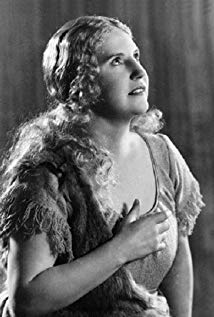 birthday of Kirsten Flagstad: she was just two days younger than Orff, born on July 12th of 1895. The Norwegian soprano was regarded as one of the greatest, if not the greatest, Wagner singers of all time. She had a voice of phenomenal beauty, clarity and power. For the first 10 years or so of her operatic career Flagstad sang mostly lyric roles in the opera houses of Sweden and Norway. She then took on the heavier roles in Verdi’s Aida and Tosca, and, in 1932, sang the role of Isolde in Tristan und Isolde. She successfully auditioned for Winifred Wagner, Richard Wagner’s pro-Nazi daughter-in-law who ran the Bayreuth Festival, and in 1934 sang Sieglinde in Die Walküre and Gutrune in Götterdämmerung at the Bayreuth. The next year she appeared at the Metropolitan Opera, first as Sieglinde, then in the role of Isolde. Her Brünnhilde, later that same year, was a phenomenal success. An invitation from the Covent Garden followed, and there she was also received with great enthusiasm. By the end of 1936 she was world-famous. In 1941 she returned to the Nazi-occupied Norway; that chagrined some of her American listeners (her husband was accused of collaborating with the Nazis but died before his trial ended). The British were more forgiving, and Flagstad resumed her after-war career in London. She sang the difficult Wagner roles, plus Strauss and more till about 1952. By that time her tone became darker and it was harder for her to reach the top notes. She retired from the opera in 1952; fr a while she continued giving concerts, but her health began deteriorating. Flagstad died on December 7th of 1962, she was only 67 years old. Here is Kirsten Flagstad in Liebestod from Tristan und Isolde. Wilhelm Furtwangler conducts the Philharmonia Orchestra. Even though in 1952, when this recording was made, Flagstad was beyond her prime, this is a superlative live performance, both by her and by the conductor. We cannot have enough of her Isolde, so here is another live performance of Liebestod, from 1936. The recording is technically far from perfect, but Flagstad is absolutely glorious. Fritz Reiner leads the London Philharmonic Orchestra.
birthday of Kirsten Flagstad: she was just two days younger than Orff, born on July 12th of 1895. The Norwegian soprano was regarded as one of the greatest, if not the greatest, Wagner singers of all time. She had a voice of phenomenal beauty, clarity and power. For the first 10 years or so of her operatic career Flagstad sang mostly lyric roles in the opera houses of Sweden and Norway. She then took on the heavier roles in Verdi’s Aida and Tosca, and, in 1932, sang the role of Isolde in Tristan und Isolde. She successfully auditioned for Winifred Wagner, Richard Wagner’s pro-Nazi daughter-in-law who ran the Bayreuth Festival, and in 1934 sang Sieglinde in Die Walküre and Gutrune in Götterdämmerung at the Bayreuth. The next year she appeared at the Metropolitan Opera, first as Sieglinde, then in the role of Isolde. Her Brünnhilde, later that same year, was a phenomenal success. An invitation from the Covent Garden followed, and there she was also received with great enthusiasm. By the end of 1936 she was world-famous. In 1941 she returned to the Nazi-occupied Norway; that chagrined some of her American listeners (her husband was accused of collaborating with the Nazis but died before his trial ended). The British were more forgiving, and Flagstad resumed her after-war career in London. She sang the difficult Wagner roles, plus Strauss and more till about 1952. By that time her tone became darker and it was harder for her to reach the top notes. She retired from the opera in 1952; fr a while she continued giving concerts, but her health began deteriorating. Flagstad died on December 7th of 1962, she was only 67 years old. Here is Kirsten Flagstad in Liebestod from Tristan und Isolde. Wilhelm Furtwangler conducts the Philharmonia Orchestra. Even though in 1952, when this recording was made, Flagstad was beyond her prime, this is a superlative live performance, both by her and by the conductor. We cannot have enough of her Isolde, so here is another live performance of Liebestod, from 1936. The recording is technically far from perfect, but Flagstad is absolutely glorious. Fritz Reiner leads the London Philharmonic Orchestra.
The great America violinist Isaac Stern was born in Kremenetz, Ukraine, on 21 July 21st of 1920. He was 14 months old when his family emigrated to the United States. One of the greatest violinist of the 20th century and one of the most important cultural figures of his time, he deserves a full entry, and we’ll do it on an occasion. For now, here Isaac Stern and Eugene Istomin are playing Beethoven’s Sonata for Piano and Violin no. 7 Op. 30, no. 2.Permalink
July 9, 2018. Respighi, Diamond, Cliburn. Ottorino Respighi, an important Italian composer of the 20th century, was born on this day in 1879. We’ve written about him on a number of occasions, for example here and here. While his best-known compositions are the so-called “tone poems,” the Fountains of Rome and the Pines of Rome in particular, Respighi also wrote quite a bit of chamber music. Here, for example, is the Violin sonata in B minor, which Respighi completed in 1917.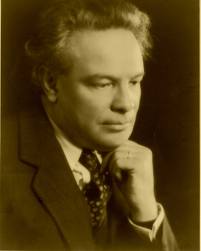 A three-movement work in a late-Romantic style, it’s performed by the distinguished American violinist Aaron Rosand, with the pianist John Covelli.
A three-movement work in a late-Romantic style, it’s performed by the distinguished American violinist Aaron Rosand, with the pianist John Covelli.
While Respighi was featured in several of our posts, we’ve never written about the American composer David Diamond. Diamond was born on July 9th of 2015 in Rochester, NY. His Jewish parents immigrated from Austria and Poland. Diamond studied the violin and music theory at the Cleveland Institute of Music before moving to New York to study with Roger Sessions at the New Music School. He won a scholarship to go to Paris; there, he met Ravel, Milhaud and Roussel, and the writers André Gide and James Joyce. While in Paris, he studied with Nadia Boulanger. He returned to the States at the outbreak of WWII, in 1939. The next 12 years were difficult, as Diamond didn’t have a permanent position, but productive: he wrote four symphonies and several other orchestral compositions, a violin concerto and a number of vocal pieces. In 1951 Diamond returned to Europe, this time as a professor at the University of Rome. A year later he moved to Florence, where he lived, more or less permanently, till 1965, avoiding the US of the McCarthy era. After returning to the US, Diamond served as the chair of the composition department at the Manhattan School of Music, and as professor of composition at Juilliard. Diamond wrote mostly tonal music, well-orchestrated, dynamic, with a great sense of overall shape. This style became quite unfashionable with the advent of the Darmstadt-influenced young composers, such as Pierre Boulez, Bruno Maderna, Karlheinz Stockhausen and Luigi Nono, who wrote in the atonal and 12-tonal mode and used serialism. Diamond never recovered his popularity, even when tonal music made a partial comeback. Still, he was a masterful composer, with many students, and his name will be remembered. Here’s David Daimond’s joyous Rounds for String Orchestra. It was commissioned in 1944 by Dimitri Mitropoulos who was then the principal conductor of the Minneapolis Symphony Orchestra. Diamond composed it that same year and Metropoulos premiered it with his orchestra. In our case, Gerard Schwarz, a champion of Diamond’s music, is conducting the Los Angeles Chamber Orchestra.
Also this week, the American pianist Van Cliburn, mostly famous for winning the First Tchaikovsky piano competition in 1958, was born on July 12th of 1934. Here he plays Un sospiro, the third of Three Concert Études by Franz Liszt.Permalink
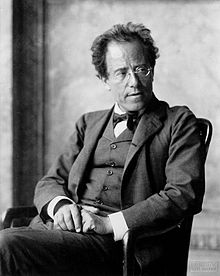 Gustav Mahler was born on July 7th of 1860. For some time we’ve been tracing his life by his major works; last year we wrote about 1901-1902, the years surrounding the creation of the Fifth Symphony. In 1903 he started working on Symphony no. 6. This was one of the happiest periods in Mahler’s life. He was newly wed to the dashing Alma, their first daughter, Maria, was born on November of 1902 (their second daughter, Anna, would be born in June of 1904). Mahler was financially secure and firmly established in Vienna’s cultural scene. Hofoper, of which he was the music director, was the most prestigious music institution of the Empire, but Mahler was also working with younger, more adventuresome musicians: he was elected the honorary president of the Association of Creative Musicians in Vienna, founded by Arnold Schoenberg and Alexander von Zemlinsky (Berg and Webern were also members of the group). At the Opera, he passed some of the day-to-day activities to his staff conductors, Franz Schalk and Bruno Walter. Mahler invited Alfred Roller, a Secessionist painter, to Hofoper as the set designer. Their 1903 production of Tristan und Isolde was a big success. During that period Mahler started traveling more often. In Amsterdam, he established a close relationship with Willem Mengelberg, the conductor of Concertgebouw Orchestra. Mengelberg, together with Bruno Walter, would become major Mahlerian of the next generation.
Gustav Mahler was born on July 7th of 1860. For some time we’ve been tracing his life by his major works; last year we wrote about 1901-1902, the years surrounding the creation of the Fifth Symphony. In 1903 he started working on Symphony no. 6. This was one of the happiest periods in Mahler’s life. He was newly wed to the dashing Alma, their first daughter, Maria, was born on November of 1902 (their second daughter, Anna, would be born in June of 1904). Mahler was financially secure and firmly established in Vienna’s cultural scene. Hofoper, of which he was the music director, was the most prestigious music institution of the Empire, but Mahler was also working with younger, more adventuresome musicians: he was elected the honorary president of the Association of Creative Musicians in Vienna, founded by Arnold Schoenberg and Alexander von Zemlinsky (Berg and Webern were also members of the group). At the Opera, he passed some of the day-to-day activities to his staff conductors, Franz Schalk and Bruno Walter. Mahler invited Alfred Roller, a Secessionist painter, to Hofoper as the set designer. Their 1903 production of Tristan und Isolde was a big success. During that period Mahler started traveling more often. In Amsterdam, he established a close relationship with Willem Mengelberg, the conductor of Concertgebouw Orchestra. Mengelberg, together with Bruno Walter, would become major Mahlerian of the next generation.
July 2, 2018. Cluck and Mahler. Christoph Gluck was born on this day in 2014. We wrote about him a year ago, so for now here ’s the chorus Chaste fille de Latone’ from Act 4 of Gluck’s opera Iphigénie en Tauride. Many noted the similarity between this chorus and March of the Priests from Mozart’s Die Zauberflöte (here). This of course is not to compare the genius of the younger composer and the considerable but still limited talents of Christoph Willibald Gluck.
Like the Fifth, the Sixth symphony was composed at Maiernigg, a small village near the resort town of Maria Wörth in Carinthia, in his “composing hut.” Mahler conducted the premier in 1906. The symphony is often subtitled “Tragic”; even though it’s not on the original score, one of the Vienna concerts which Mahler conducted had this sobriquet printed on the program, so clearly, he agreed with it. This is rather paradoxical, considering that it was written when everything seemed to be going well in Mahler’s life, and many real tragedies that befell him were still to come. The symphony consists of four movement: 1. Allegro energico, ma non troppo. Heftig, aber markig (Violent but succinct); 2. Scherzo: Wuchtig (powerful); 3. Andante moderato; and 4. Finale: Sostenuto – Allegro moderato – Allegro energico. That was the sequence of the movement when the score was initially published. Then, while rehearsing, Mahler decided to move around two inner sections, playing the slow Andante moderato first, followed by the Scherzo. Apparently, that’s how he performed it on the premier and that’s how it was performed for a while. Then, in 1919, Alma Mahler sent a telegram to Willem Mengelberg, with "First Scherzo then Andante" in it. Even though Mengelberg had performed the symphony following Mahler’s later order, with the Andante preceding the Scherzo, he obeyed Alma’s direction. This is the order in which most conductors perform the Symphony these days, and this’s how Leonard Bernstein plays it with the Vienna Philharmonic orchestra in the 1989 recording. Here are: Allegro, Scherzo, Andante, Finale.Permalink
June 25, 2018. Claudio Abbado. We may be wrong about Gustave Charpentier, but it seems not a single significant composer was born this week. As for Charpentier, who was born on this day in 1860, he’s known for just one composition, the opera Louise, which was premiered (to great success, we might add) in 1900. One aria is still being performed quite often on the concert scene – Depuis le jour. You can hear it nicely sung by Anna Netrebko. The Prague Philharmonia is conducted by Emmanuel Villaume.
As long as we’re lacking composers with known birth dates, let’s mention one from the older ages. Alessandro Striggio, an Italian, was born around 1536 into an aristocratic Mantuan family. In 1559 he moved to Florence, to the court of Cosimo I de' Medici, Grand Duke of Tuscany. Apparently, he was close to the Duke, as in 1567 Cosimo sent him on a diplomatic mission to London. Later Striggio traveled to Austria and Bavaria. In 1584 Alfonso II d’Este, Duke of Ferrara, invited Striggio for a short visit. At the time, Ferrara was known as one of the musical centers of Italy (and, by extension, of the world); one of the jewels of the court was a group of virtuoso female singers called concerto di donne. Later, Striggio visited Ferrara several more times. In 1587 he moved back to his native Mantua, were he served at the court of Vincenzo Gonzaga. Striggio died in Mantua of a fever on February 29th of 1592. At the time the 25-year-old Claudio Monteverdi was a viola player at the court. Here’s Striggio’s famous motet Ecce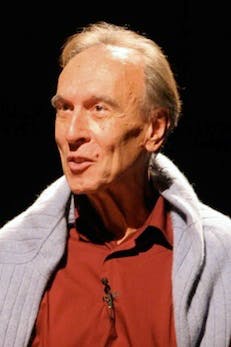 Beatam Lucem. It’s performed by Ensemble Huelgas under the direction of Paul van Nevel.
Beatam Lucem. It’s performed by Ensemble Huelgas under the direction of Paul van Nevel.
Claudio Abbado, one of the greatest conductors of the “post-Karajan” era, was born in Milan on June 26th of 1933. As a youngster he went to Wilhelm Furtwängler and Arturo Toscanini’s rehearsals (he found Toscanini’s dictatorial manner unpleasant). Abbado attended the Milan Conservatory, where he studied piano and conducting. Upon graduating, he spent some time in Vienna; there he befriended Zubin Mehta and listened to the rehearsals of Bruno Walter and Karajan. He conducted his first public symphony concert in 1958, and one year later he led a performance of Prokofiev’s The Love for Three Oranges. In 1960 he successfully debuted at La Scala (in 1969 he became the theater’s resident conductor). Abbado’s career took off in the 1970s: he was invited to the major opera theaters, such as Covent Garden and the Vienna Staatsoper. In 1984 he became the music director of the Vienna opera. All along he was extensively performing with symphony orchestras, often programming the music of the 20th century. He became the Principal conductor of the London Symphony and the principal guest conductor of the Chicago Symphony. In 1990, upon the death of Herbert von Karajan, the Berlin Philharmonic selected Abbado as its next conductor. In 2000 Abbado had major surgery for stomach cancer, which severely affected his performance schedule. After formally leaving the Berlin Philharmonic in 2002 he continued working with many orchestras, but especially with the European Union Youth Orchestra, which he co-founded in 1978, the Gustav Mahler Youth Orchestra, which he founded in 1986, and the Chamber Orchestra of Europe.
Abbado’s discography is vast and of extremely high quality, but he was especially well known as a superb interpreter of the music if Mahler. Here he conducts the Vienna Philharmonic. The mezzo is Federica von Stade.Permalink